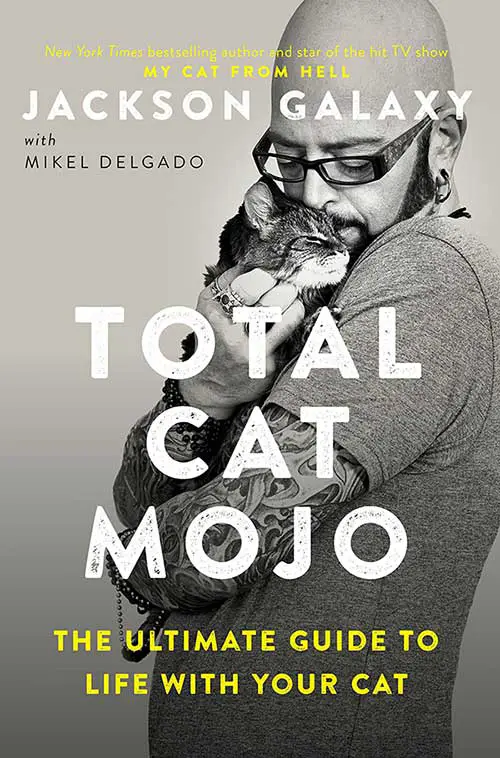Picture this!
When you first got appointed to your current job, everyone seemed like a stranger to you.
It took sometime before you could familiarize with your new colleagues. And in the process, you isolated those whom you considered as bosom buddies. Not that you dislike everyone else, but there are those you felt more personally attached to. The same happens with our feline friends.
In a family of, say, five people, it’s unusual that a cat will treat everyone in the same manner. But how do cats choose their favorite person?
You’ll automatically become your cat’s favorite person if you feed it well, treat it nicely, and spend a lot of time bonding together. Like dogs, cats are naturally discriminative. How they treat a person pretty much comes down to how that person handles them.
On a long enough timeline, a cat will develop a special liking for a particular person in a family, and somewhat act indifferent to others.
Table of Contents
How Do Cats Pick Their Favorite Person?
So we’ve seen that indeed, cats do have their favorite people. If you’re a cat owner, you’re probably wondering whether your kitty treats you as its favorite human.
And perhaps you’re asking yourself the all-too-important question, “How do cats choose a favorite person?” Is it by default or design? And do cats really have personal preferences?
Let’s examine some of the top reasons why your cat may prefer you over someone else.
1. You Feed It Well
This must certainly be the first and the main reason why your cat would choose you over someone else.
Feeding our pets is the most fundamental way through which they get attached to us.
If you feed your cat so well that it never lacks food even while you’re gone, the cat will never wander too far away from home. It will always associate your home with abundance, and whenever you’re back, you’ll notice how jovial and excited your little furball is.
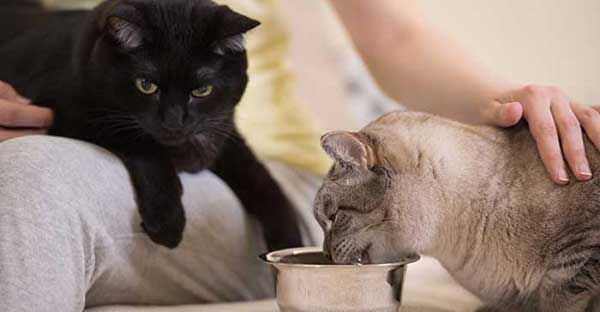
But don’t get this all twisted.
Some people have always propagated the notion that cats only live with humans for convenience purposes. That as long as we stop feeding and sheltering them, the relationship comes to an end and the cat takes off. Nothing can be further from the truth.
Research studies on cat behavior have proven time and again that cats are independent pets. They don’t exclusively rely on humans for foods, and can pretty much make it on their own.
However, that doesn’t mean they don’t value the little acts of kindness we show them. When we feed them regularly, they’ll always reciprocate by treating us nicer than other people.
2. You Play Together
Feeding your cat alone isn’t enough to qualify you as its favorite human. You must always go the extra mile.
A full and happy cat will invariably want to play with their owners. And in the process, strong bonds are formed between the pet and their human friends.
? If a cat has you as its favorite person, you’ll often realize that it likes to play around you. The cat will probably come to you and roll in the grass, as an invitation to come play together.
As a loving and caring owner, you must see to it that you respond to these little requests. It’s an excellent way of further strengthening the bond that already exists between the two of you.
3. You’re Responsive to Its Needs
Now, feeding a cat or playing together aren’t the only things that will endear the feline to you. How you respond to the cat’s appeals also matter. For instance, a simple meow can mean many things.
You should understand what the cat is trying to communicate and respond appropriately. It could be that the cat is trying to draw your attention to a danger that you’re yet to make out. Or perhaps, it just wants to hear your voice after your long absence.
Remember that like dogs, cats also suffer from separation anxiety especially when their favorite person is away. When you come back, the cat will be excited to have you around. So, don’t act too busy, as your unresponsiveness may only worsen its anxiety.
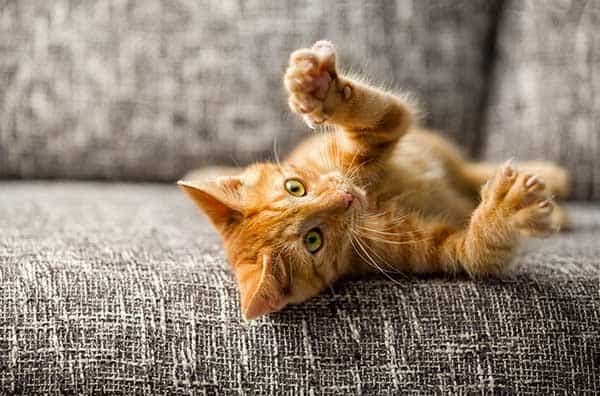
4. It’s In Their DNA
So, it turns out felines also have their natural biases. That even if two people treat a cat in nearly the same manner, the cat will still choose one person over another.
Personal preferences aren’t unique to humans; cats also have their tastes and choices.
A cat’s personality is mostly influenced by its breed.
For instance, smaller breeds tend to be more playful while the larger ones are less sociable.
Similarly, a skittish cat will favor you if you make it feel more secure. That means you don’t bother it with frequent pettings or try to corner it.
Going by its personality, a cat will naturally gravitate towards humans with whom it shares similar attributes.
So, don’t be surprised to discover that your cat loves you more than someone else that feeds them. It could all be in its DNA.
How Cats Communicate With Their Human Friends?
Knowing that you enjoy preferential treatment from your feline friend isn’t enough. You’d naturally want to see the bond grow stronger day by day.
For that to happen, you’ll need to understand how cats communicate so that you can always interpret the signals appropriately. Again, that would require spending a significant amount of time together.
The following are some of the common ways cats communicate with their human friends.
1. Meowing
A cat’s meow is always music to our ears, no matter how persistent it is. But have you ever paused to ponder what your cat might be trying to communicate?
From time immemorial, a meow has always been associated with begging for food. However, it’s not unusual to discover that your cat meows even when it’s visibly full.
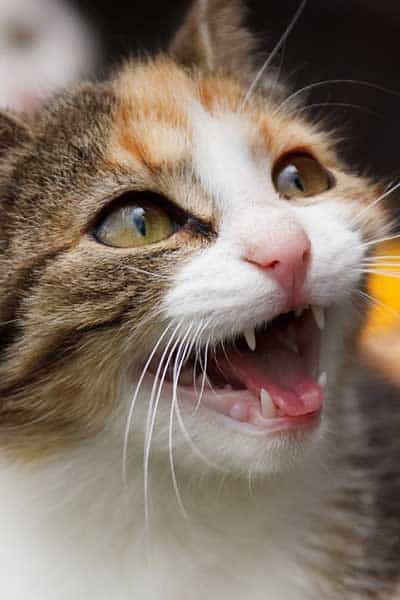
Even before we decode the numerous messages a cat’s meow could possibly carry, are you aware that cats only meow for their human friends? I guess you’ve never been keen enough to note that cats seldom communicate by meowing at each other.
Now, a meow could mean many things depending on how a cat gives out the sound.
- A short meow is like a greeting.
- A long meow means the cat is trying to assert some dominance.
- A bunch of meows in quick succession means the cat is excited to see you around.
- A mid-range meow is a request to feed or play with the cat. This meow is normally persistent when the cat smells some food nearby.
- A low-pitched meow means the cat is quite irritated with you.
- A very high meow means the cat’s super excited at something you’ve done. It’s the human variant of bursting into laughter.
2. Purring
Cats purr to mean they’re pretty content with things as they are.
In most cases, a cat will purr if it’s full and relaxed. Purring ends immediately something frightens the cat or destabilizes it in any other way.
3. Proximity
According to Marilyn Krieger, a certified Cat Behavior Consultant, cats will naturally want to be around their favored humans. So, a cat sticking around is a sign that it enjoys your presence.
This phenomenon is especially common with less sociable cats. Instead of frolicking with their fellow cats in the grass, they’ll go right up to their favored person and lie by them.
Besides a cat lying by their owners, proximity manifests in different other ways. Head-butting, sitting on your laps, as well as following you around, are other ways a cat tries to stick close to their favorite person.
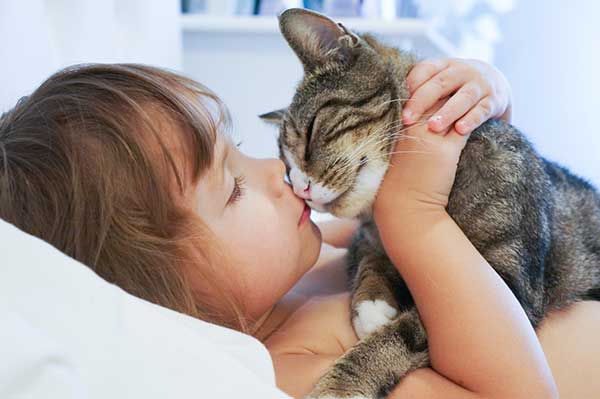
4. Hissing
Most cats hiss when they feel threatened. If your cat is hissing outside and not necessarily at you, proceed with caution as there may be an interloper.
The intruder could be other cats, dogs, or even a serpent. Hissing and spitting is the clearest signal that an attack is imminent.
How to Become Your Cat’s Favored Human
Becoming your cat’s favored human basically involves responding appropriately to the signals in its messages.
The following are some tips that might help you win your kitty’s trust and confidence.
1. Feed the Cat Well
There are no two ways about this. Always ensure your cat is well-fed. Otherwise, it will begin to wander too far from home.
If your cat gets the right kind of food from your neighbor’s house, the cat may eventually move homes. Before you know it, your kitty would have started a family just next door.
Also, remember that there are qualitative and quantitative aspects to feeding. Don’t focus only on quantity, but also ensure the feline eats a balanced diet. That will help keep certain lifestyle diseases at bay, such as obesity.
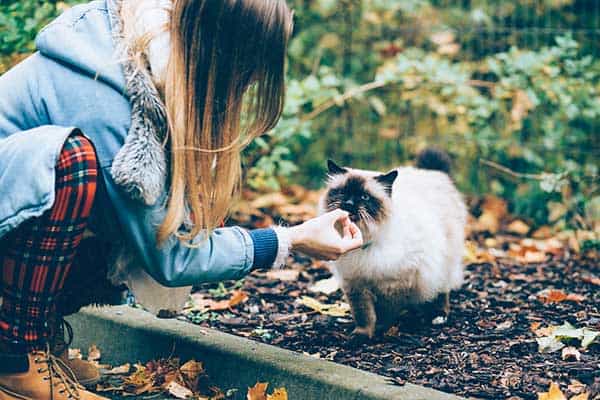
2. Play Together
Playing with your cat isn’t only a way to have fun. It’s also a perfect opportunity to get the cat to burn some calories, hence live a healthier life. Most importantly, playtime is a bonding experience.
To spice things up, introduce things like cat toys to stimulate its senses. Examples of these toys include a laser ball and play mice. Don’t just throw the toy to the cat and sit back. Bonding with the cat requires that you take an active part in the game.
3. Pet the Cat
Petting a cat is also another excellent way of forging unbreakable bonds. But first, you’ll need to establish whether the cat loves to be petted in the first place.
For instance, if the cat frequently sits on your lap or head-butts you, then that indicates it’s a fan of petting. As much as you cuddle your cat, also learn to give it some space when it needs it.
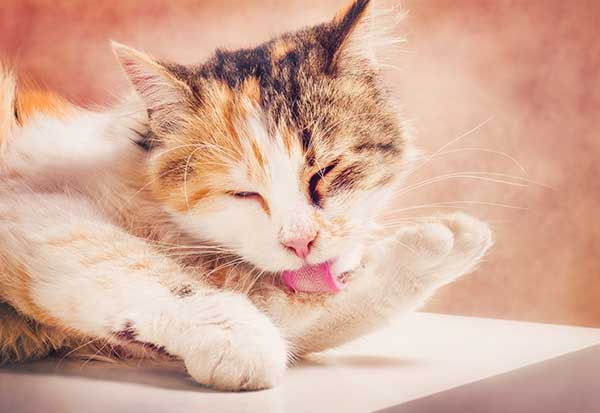
4. Study Your Cat’s Personality
Much like humans, cats have their own tastes and preferences. Obviously, they won’t come to you and narrate their likes and dislikes. The onus is on you to study their personality and know how to treat them.
Is the cat afraid of certain sounds? Does it feel uncomfortable around some people? Does the feline likes to be the center of attention or it’s somewhat reserved? These are some of the things you’ll need to find out on your own.
5. Be Patient
It takes time to get used to a cat and for the cat to get used to you, so patience is key.
For instance, a cat that suffered a traumatic experience in the past may prove difficult to deal with. Just be patient and know the things that make the cat tick, as well as those that annoys it.
? Sadly, cats aren’t as easy to train as dogs. So, you may need to put up with its unbecoming behavior for some time. But with time, the cat will rise above their phobias, aggressive tendencies, and other unruly behavior.
6. Positive Reinforcements
Much like dogs, cats love rewards. You can offer these treats as a way of reinforcing good behavior. If the cat does something nice, be ready to offer it a reward immediately.
That way, the cat will associate the behavior with treats and keep at it. While most cat treats are food, a treat doesn’t necessarily need to be food. What about a pat or rub on the back!
Conclusion
So, how does a cat choose its favorite person?
It all comes down to how you relate with the cat. Feeding the cat well, playing together, and petting it are a great place to start. But above all, ensure you study your cat’s personality and way of communication.


